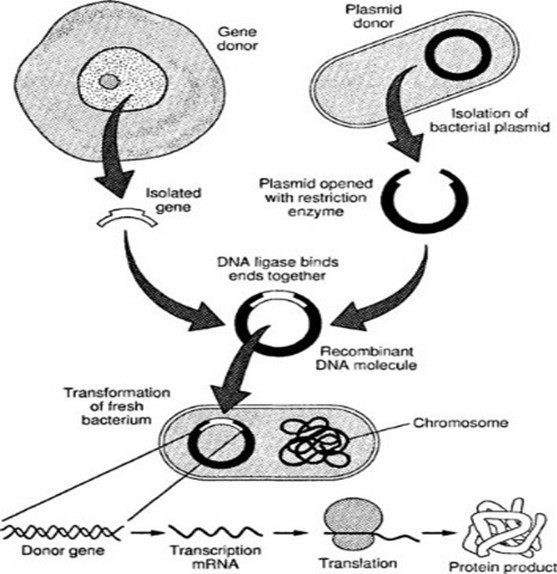First Patent for Recombinant DNA Technology
Stanford’s Office of Technology Licensing (OTL) director Niels Reimers launched a trial technology licensing program in which innovators were asked to submit their discoveries, and the most promising one in terms of commercial viability was chosen to be patented by the USPTO. One-third of the royalties would go to the inventor, one-third to the inventor’s department, and one-third to the university’s general revenues.
Cohen submitted and signed an invention disclosure on June 24, 1974, using the standard OTL form. The disclosure of “A Process for Construction of Biologically Functional Molecular Chimeras” was based on three articles that were published in 1973 and 1974, as well as information shared at seminars and symposia. While there were four other individuals listed as co-authors on the application – Annie Chang, Robert Helling, John Morrow, and Howard Goodman – only Cohen and Boyer were recognized as the inventors. Helling and Morrow found this intolerable.
The invention disclosure sent by Reimers to Cohen was received by Josephine Opalka at the University of California Patent Office on June 26, 1974. Since the inventors came from two distinct institutions, both institutions had to approve the patent application before it could be filed.
A patent application must be submitted within a year of the invention’s first public disclosure, as per US patent law. The innovation was made known to Reimers in May 1974, and the first publication took place in November 1973. However, it was impractical to use recombinant DNA technology in an industrial setting. As a result, he hired William Carpenter, who was working at OTL during the summer, to look into the business applications of recombinant DNA technology.
Boyer and Carpenter talked about the technology’s business importance. Boyer projected that the technology would have several uses, including the manufacturing of hormones, enzymes, and antigens for the production of antibodies. Additionally, he anticipated that with further development of this technology, it would be possible to create insulin, a medicine that would be very valuable on the global market.
Stanford University and the University of California submitted a patent application titled “Process and Composition for Biologically Functional Molecular Chimeras” on November 4, 1974, just one week before the submission date.
The National Academy of Science nominated Paul Berg, a biochemist at Stanford University, to lead the investigation of the potential danger linked with recombinant DNA and proposed research standards (NAS). To examine developments in recombinant DNA research and related biosafety regulations, he convened the Asilomar Conference on Recombinant DNA Molecules, an international conference.
Berg disagreed with Cohen-patent Boyer’s application’s more expansive claims, which asserted ownership of the “creation of all possible recombinants, connected in all possible ways, cloned in all possible species, utilizing all possible vectors.” He argues that the Cohen-Boyer method is crucial to genetic engineering and should not be kept secret. Berg felt that his and other scientists’ work on the development of recombinant DNA had been overlooked because Cohen and Boyer were the only inventors listed in the patent application.
Joshua Lederberg and Kornberg were the opposing candidates. They claimed that academic patenting would impede the exchange of scientific information. The three opponents, Lederberg, Kornberg, and Berg were all influential and well-known, and it was impossible to disregard their opinions when pursuing the patent application.
Following the discussion with Berg and Yanofsky, the NIH, and the NSF, Stanford should move forward with the application process as usual. The Stanford-UC application’s product claim was denied by the USPTO. Reimers submitted a fresh patent application on May 17th, 1976, leaving out the product claim and including solely the procedure claim.
The preparation of the human protein somatostatin in bacteria utilizing recombinant DNA technology marked a turning point in the fall of 1977. This demonstrated the viability of recombinant DNA technology for industrial use. Due in part to politicians’ appreciation of the technology’s significance as a boost to the American economy and pressure from the scientific alliance the American Society for Microbiology, all federal legislation to limit recombinant DNA research were defeated in Congress. In July 1978, the National Institutes of Health (NIH) released a new set of regulations that loosened the restrictions on testing.
In March 1978, Fredrickson announced the National Institutes of Health’s position on property rights in recombinant DNA research. After considering “a wide range of individuals and institutions on the matter,” he had come to the conclusion that there should not be a separate mechanism for patent applications on such findings. Fredrickson also gave Stanford permission to proceed with its licensing activities.






